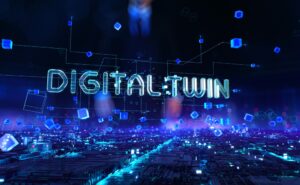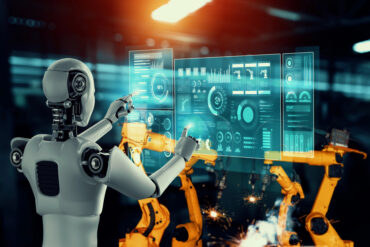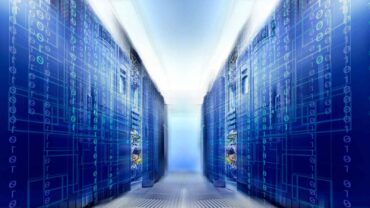
A discussion about the challenges automotive manufacturers face today and how digital thread and digital twin technologies can help improve operational efficiencies and more.
Automakers are under great pressure due to constantly changing customer preferences, a transition to electric and hybrid vehicles, supply chain issues, the need to use resources efficiently, and more. This is leading many manufacturers to turn to smart manufacturing strategies.
RTInsights recently sat down with Nand Kochhar, Vice President of Automotive and Transportation Industry Strategy with Siemens Digital Industry Software, and Reinhold Niesing, Vice President of the Siemens Automotive Team. We discuss these challenges and how digital thread and digital twin technologies can help improve operational efficiencies and more.
Here is a lightly edited summary of our conversation.
RTInsights: What is the situation in the US automotive market?
Nand Kochhar: The automotive market is going through a major transformation. They say change is the only thing constant. That’s how I describe the industry because of many, many challenges, both from a business and technology perspective.
It all starts with the consumers. Consumers are driving demand, whether it comes from a sustainability perspective or if they want new features and functions in the automobile.
The industry itself is going through a transformation in terms of the business models. That’s where technology is driving a lot of the changes. For the past few years, the things we’ve been talking about include connected and autonomous cars, as well as shared mobility and electrification.
As we know, we’ve been building cars and trucks all over the globe for more than a hundred years. Primarily, they have been internal combustion engines. So, the major shift going on is electrification, whether it’s a pure battery electric vehicle, plug-in hybrid, or vehicles using alternative fuels like hydrogen. It’s not the same business that has been done for many decades before, and that’s a major shift.
As such, the current situation continues to evolve. We were purely on a path of only battery-electric vehicles. But there are lots of issues with the raw material supply and global challenges. So, the industry is shifting to plug-in hybrids. They’re still delivering the sustainability objectives, but those volumes keep adjusting.
So, what does that mean? The industry has to be agile and adapt to consumer demand, environmental changes, and the global changes going on in a big way. There are many implications of this. One is purely from a product development perspective. You have to redefine your cycle plan. You plan certain volumes to be built or designed, and now you shift into that. Equally important, your manufacturing footprint, your assembly plants, your parts manufacturing, etc., have a huge impact on manufacturing.
As you know, most of the manufacturing involves long lead items with heavy capital investments, so the industry is challenged.
Reinhold Niesing: Another aspect is the workforce. You need to find the workforce, acquire new people, and find the right skill sets. Or, can we tap into the different skill sets that already exist and readjust those workers to meet current needs?
RTInsights: How do we transform today’s production and establish intelligent operational excellence?
Reinhold Niesing: It’s all about how future automation systems or manufacturing systems should look and what kind of technologies can be used to assist the automotive industry to become more agile or adjustable to different marketplaces.
A year ago, we talked about all-electric cars. Maybe now we have a different strategy where we include hybrid systems. So, I need an automation system that’s capable of adjusting to different scenarios.
With a lot of our customers, we discuss an overarching playbook for digitalization. That digitalization doesn’t actually end with the design of the product. It goes all the way down to the manufacturing shop floor.
We want to make the manufacturing shop floor more agile and capable of adjusting to different scenarios. IT/OT integration comes into play here when we say, “Okay, we want to have a wall-to-wall, end-to-end solution covering the digital threads when having a more agile manufacturing system.” If we put this then into solutions, dare we say an edge-based system, we want an OT system that uses the same best practices that we already use today in the IT environment.
So, IT and OT are no longer different systems. Best practices used in IT are now used in OT. Maybe you have seen a lot of material about edge-based manufacturing systems. This is one of the examples where we have the shop floor much more closely connected to the IT systems. When we use an edge system, we can implement different deployment strategies and keep the manufacturing system more adjustable, just like we do in IT all the time.
Nand Kochhar: I agree with everything Reinhold said. Adding digital twin technologies to enable intelligent operational excellence is the key. Bringing IT and OT worlds together, as Reinhold explained, establishes a closed-loop process. Making sure that every part, whether it’s a component or a full car, from a production excellence standpoint, is better than the one before.
Digital twin technologies can feed data back all the way into manufacturing as well as into product development, so that brings it all together.
One other technology is AI. So, regardless of the type, whether it’s rules-based, adaptive AI, generative AI, or something else, AI concepts are prevalent both in product development and in manufacturing. That’s where we are connecting through AI, the edge devices Reinhold touched on and continuously feeding, building on top of the quality systems we have, making them even better for our customers.
Reinhold Niesing: So overall, it’s about having a manufacturing system that can be easier adjusted, not like traditional systems where we had a manufacturing system that was designed for a specific purpose.
That’s needed because of the changes in the industry. Cars are becoming connected cars. And you’re not buying a fixed-functionality car. You have a car that can be updated, which you can use to get system updates and software updates, add new functionality, and, in some cases, actually correct some problems and bug fixes.
Today, many car manufacturers are providing additional apps with different functionalities. So, if you buy a car, you don’t buy the car and keep the car the same way for the next 10 years. You have a car that is updated and modernized, using the same concepts that we use on the manufacturing shop floor. We don’t have a fixed functionality shop floor any longer. You have a more agile system.
RTInsights: Siemens has a playbook that describes the road forward to becoming a digital, adaptable, and sustainable enterprise. Can we talk about that and those concepts?
Reinhold Niesing: We have a highly specialized digital thread that is based on automotive-specific workflows and can accelerate your way to success. For the automotive industry, we have a digital thread for smart manufacturing. That gives manufacturers a playbook and a blueprint on how to do digitalization in a consistent way that makes business sense.
So, how do I do digitalization? We do not talk about specific solutions or products. Instead, we talk about how to do digitalization in a consistent way that creates an impact on our customers.
Nand Kochhar: Yes, a digital thread is a representation of a customer process. Customers adapt to that based on what scenarios they want to address.
We have done this with many customers. We bring the knowledge to the new customers when we deploy our digital threads, then take them into the digital twin, bringing the real and the digital worlds together. We feed data about what is happening on the shop floor back into the digital world.
So those are the technologies, call it a part of the playbook, that we bring to our customers, share, and show the path. Again, we all know what needs to be done is to get started, have a small success, and then continue to grow. We can use the framework of the overall plan but pick an area where they can show progress and show the business results. And that’s how we work with our customers to show them the path to that digital transformation journey.
RTInsights: Can you talk about some customer examples?
Reinhold Niesing: At Ford, this digital transformation effort took the form of a very specific product. Specifically, in April, we introduced the Siemens Simatic Automation Workstation, which was co-developed with Ford.
[According to the press release when the workstation was announced, “The solution allows manufacturers to replace a hardware PLC, a conventional HMI, and an edge device with a single, software-based workstation. This ushers in Information Technology (IT) workflows to Operational Technology (OT) environments.”]
It is an edge-based system that provides agile manufacturing system capabilities and the integration of the shop floor.
So, in a very consistent way, we can integrate this and get feedback from the manufacturing shop floor to do a kind of benchmark on how our digital twins work getting feedback. Are the results really the ones that should be predicted with our digital twin?
That’s part of our whole digital thread methodology, but we use the same methodology, for example, at Ford, saying, okay, make it an end-to-end solution and not only a one-way street.
This device is the physical representation of an IT OT integration concept. And it’s all implemented on a single device. And this is why, for example, companies like Ford like it so much. It’s easy to use and easy to deploy. And we are very happy about this because it was not only a development from Siemens, but it was also developed very closely with Ford.








